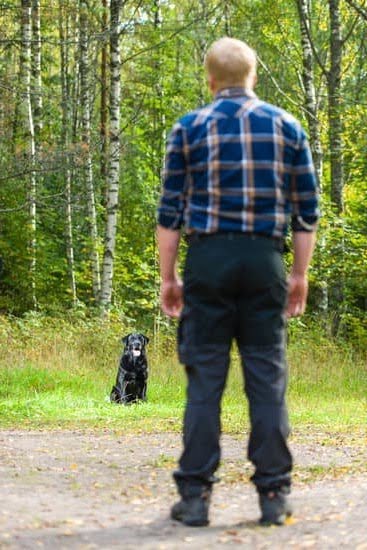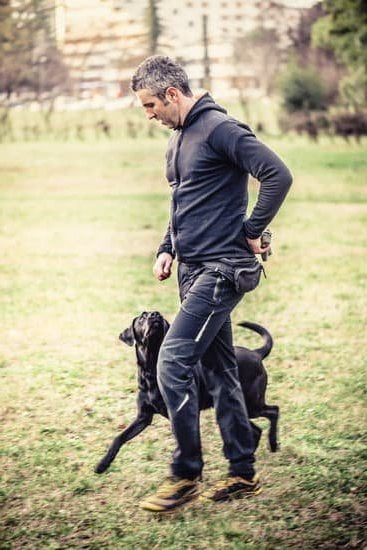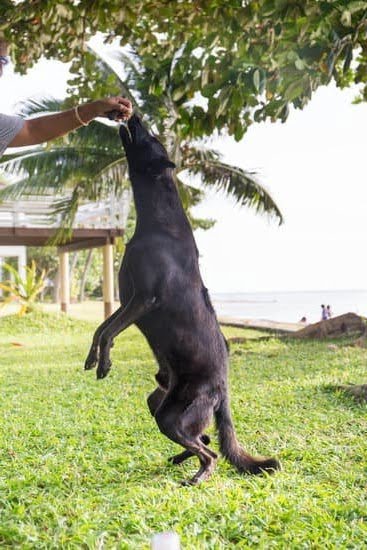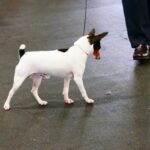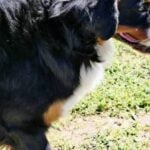Introduction
Australian Cattle Dogs have a long and fascinating history. They were developed in New South Wales, Australia in the early 19th century to be a working breed that could herd cattle across long distances on difficult terrain. The breed is highly intelligent, loyal, and eager to please.
Agility training can benefit Australian Cattle Dogs greatly for several reasons. Agility training helps to build obedience, confidence, mental and physical stimulation, trust between dog and guardian, and even improves patience levels. For Cattle Dogs with their herding instincts and natural stamina it can be very beneficial activity that boosts their physical abilities while offering them an opportunity to bond with their owners. Furthermore, agility courses present an exciting challenge that is sure to keep a herder entertained while providing them with appropriate outlets for their mental energy in order to avoid any of the less desirable behaviors often associated with the breed such as nipping or excessive barking at strangers and other animals.
Types of Agility Training
Agility training for Australian Cattle Dogs can range in difficulty and complexity. Generally, agility training consists of six different categories. The first category is obedience, which includes basic commands like Sit, Stay, Come, Heel, and Down. The second category consists of jumps and weaves. Training your dog in this area will involve teaching them to safely navigate obstacles such as hurdles and weave poles. The third type of agility training is the contact equipment, which involves teaching the dog how to work their way through and around contact points on an A-frame or pause table. The fourth type requires teaching the dog how to navigate a seesaw or teeter. This involves teaching the dog when to slow down approaching the teeter and when to jump off once they reach the top side of the teeter. The fifth type includes tunneling exercises in which the dog must maneuver their way through various types of tunnels while following a designated path. Finally, rally classes incorporate all these skills plus give directions to perform tasks with increasing levels of difficulty each class and multiple off course detours as distractions for further proofing each skill taught so far
What You’ll Need
When training an Australian Cattle Dog for agility, there are several pieces of specialized equipment and space requirements that must be considered.
You will need to provide a large open area with proper fencing such as chain link or vinyl-coated fencing to contain the dog while they learn and practice the agility obstacle course. Additionally, you may need to place temporary jumps, tunnels and other obstacles to create the agility course on. Also, be sure to have proper safety equipment on hand such as safety mats, cones, and collars.
The agility equipment you need for your Australian Cattle Dog may vary depending on which obstacle class or difficulty level your dog is competing in. You may need items like an A-frame, spread jumpers, weave poles, see saws and tire jumps for start levels of competition. For higher level competition you may require even more sophisticated jumps such as panel jumpers or double bars.
Finally, your Australian Cattle Dog will also need lots of motivational rewards—such as treats or toys—to reinforce positive behaviors during agility training. Be sure to have plenty of these handy during practice sessions so that your pup will remain enthusiastic during his lessons!
Preparing Your Dog
Australian Cattle Dogs have a natural instinct for agility. To tap into this, their handler must be patient and willing to train the dog in herding and obedience exercises that can be applied to agility work. Preparing your Australian Cattle Dog for agility training should begin by teaching basic commands such as sit, stay, down, come, etc. Additionally, you will want to practice teaching your pup how to jump over obstacles and walk along balance beams. Start with very low obstacles and commands before graduating up to more difficult tasks once her progress begins to show. You can also introduce your pup to basic weave pole drills with the goal being teaching them how to navigate between the poles one at a time.
As part of your preparation routine, make sure that your pup is physically prepared for the rigors of an agility run. Taking short daily walks and providing plenty of opportunities for playtime goes a long way in ensuring that they have developed the proper muscle tone required for agility activities. Finally, take some time during each training session to reinforce good behavior with treats that have been specifically chosen for agility activities; these treats should be small but rewarding so they won’t distract or interfere with their performance on the course.
Safety Tips
Warm-Up Tips: It is important to warm up before beginning agility training. This includes slowly warming up the muscles and joints by jogging, stretching, and doing some light strength exercises. Be sure to use proper form when stretching and exercising to avoid potential injury.
Exercise Precautions: When preparing for agility training sessions, be aware of any physical limitations your dog may have that could lead to problems while running on the course. With planning ahead you can adjust or avoid certain exercises depending on your individual dog’s abilities. Additionally, take into account the weather conditions that can affect your dog’s comfort level and energy level.
Health Monitoring: During an agility session, it is important to monitor your dog’s health for signs of fatigue or over-exertion such as heavy panting or excessive drooling and to make sure they are adequately hydrated throughout the session. Also watch for any signs of injury such as limping, favoring a limb, or reluctance to engage in certain activities —it is essential that you contact your veterinarian immediately if such signs emerge during a session!
Agility Workshop
There are several important elements that should be taken into account when setting up and running an Australian Cattle Dog Agility Workshop. First, the location of the workshop needs to be considered carefully; it should be somewhere that is safe, has adequate space for all participants, and offers a good environment for learning the skills necessary for agility.
Next, the trainer needs to develop an effective lesson plan. Depending on the skill level of attendees, the lessons can range from basic commands like “sit” to more challenging obstacles such as seeing-eye turns or weave poles. Each drill should be broken down into simple steps with helpful tips given along the way.
The course should then be set up prior to beginning the workshop. Set out various obstacles of increasing difficulty and make sure they are placed in a way that will challenge each dog while still providing a sense of security throughout training.
Finally, once all preparations have been made, it is important to market the workshop to gain interest from those interested in agility training with their Australian Cattle Dog. Spread word through social media posts, newsletters and leaflets at local pet stores or dog parks. Additionally, providing access to video clips of agility success stories could also help draw attention from participants eager to give it a try with their own pets.
Common Challenges
One common challenge when training an Australian Cattle Dog for agility is their strong prey drive and tenacious nature. Cattle Dogs tend to exhibit a lot of energy and excitement when they spot new objects, making it important to adapt the training sessions to focus on recalling this energy into manageable behaviors. This can be done by providing lots of praise and rewards when the dog is responding appropriately while introducing further commands afterwards. Additionally, incorporating exercises such as fetch into agility courses can help redirect their attention away from the environmental distractions that could disrupt an agility run.
Another challenge faced during Australian Cattle Dog agility training is teaching self-control. Due to their strong herding instinct, Cattle Dogs may struggle with disengaging from tasks or struggling to keep in line when there are distractions around them or new environments. Once your dog understands verbal commands such as “stay” or “wait” this can be practiced regularly during agility training sessions as well as other daily routines such as going for walks or playing fetch. Providing plenty of positive reinforcement for staying in position can help reinforce desirable behaviors during activities where self-control is especially needed.
Finally, since these dogs were bred for working purposes, they may require more repetitions than other breeds before grasping a concept or behavior that they have been asked to learn in order to truly understand it thoroughly and find it easy and enjoyable. Patience should be exercised during sessions so that your dog understands each task better before proceeding onto the next one; taking breaks throughout will also help them stay focused and actually process what they are being asked to do.
Motivation Tips
1. Make the agility course into a game of sorts by adding small treats in different locations or pieces of equipment on the course. Having your dog find each tasty surprise will not only motivate them to complete the training but also keep them occupied with something fun and stimulating.
2. Establish a rewards system to give them additional motivation as they complete obstacles or entire courses. Whether this is verbal or physical praise, treats, toys, or even some extra time playing together, rewarding good performance will help your Australian Cattle Dog stay happier and more dedicated to the task at hand.
3. Set up an agility practice area that is insulated from distractions so that your dog can focus on the task without getting overwhelmed by environmental factors such as other animals or loud noises. This way, their attention stays on completing their tasks and you can maintain their interest for longer amounts of time without worry about distractions hindering their progress.
4. Incorporate puzzles into your training sessions with easy-to-follow commands to activate different machines on the course (such as jumps and tunnels). The puzzle element encourages problem solving skills and is effective in teaching quicker response times while providing some mental stimulation during long training sessions.
5. Finally, make sure you remember to give your Australian Cattle Dog plenty of breaks when necessary! While breaks may seem counterintuitive in order to keep up motivation, spending too much time on one task (even if it’s enjoyable) could lead to boredom and lack of interest – alternatively if it’s too brief it won’t allow enough reinforcement for successful completion which can lead to frustration and discouragement on both parts over time! So don’t forget balance is key in order for both you and your pup get the most out of agility training!
Conclusion
Agility training can be extremely beneficial for Australian Cattle Dogs, both physically and mentally. Physically, agility training helps to keep the dog in shape, build strength and endurance, improve coordination and balance, and can even help to prevent injury. Mentally, agility training requires problem-solving skills which can help to keep the dog entertained and occupied while also strengthening the bond between owner and pet. Emotionally, it’s a great way for them to exercise their natural instinctive behaviors while providing mental stimulation and stress relief. By working together as a team with their owners, Australian Cattle Dogs increase their levels of trust, companionship, loyalty and confidence in themselves. In short, engaging in regular agility training can be an immensely rewarding experience for both human and animal alike!

Welcome to the blog! I am a professional dog trainer and have been working with dogs for many years. In this blog, I will be discussing various topics related to dog training, including tips, tricks, and advice. I hope you find this information helpful and informative. Thanks for reading!

